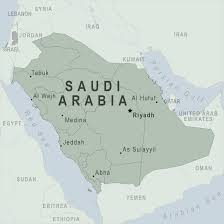 Some 3,000 years ago, around the time of the First Temple, there was a strong, vibrant Jewish community in the area of what is today Saudi Arabia. In the sixth and seventh centuries, there was a considerable Jewish population in Hejaz, mostly around Medina, Khaybar and Tayma. Hejaz makes up most of the western part of modern-day Saudi Arabia and is centered on the two holiest Muslim cities, Mecca and Medina. Jews living there were powerful and wealthy and were respected by the local Arabian tribes for their religion, culture, erudition, and literacy.
Some 3,000 years ago, around the time of the First Temple, there was a strong, vibrant Jewish community in the area of what is today Saudi Arabia. In the sixth and seventh centuries, there was a considerable Jewish population in Hejaz, mostly around Medina, Khaybar and Tayma. Hejaz makes up most of the western part of modern-day Saudi Arabia and is centered on the two holiest Muslim cities, Mecca and Medina. Jews living there were powerful and wealthy and were respected by the local Arabian tribes for their religion, culture, erudition, and literacy.
When Mohammed went to Medina, he entered into an alliance with the Jews. He studied and adopted many of their customs into his incipient religion but when, he could not convince the Jews to accept him as a prophet, he had one tribe of Jews murdered and decapitated. Other groups were exiled to Edri (now in Jordan) and Khaybar. Mohammed confiscated their assets and their children were sold as slaves; the women were given to the victorious soldiers for the Muslims to use.
When Mohammed later conquered Khaybar, he permitted most of the Jews to live as dhimmis, officially second-class citizens who had to pay exorbitant taxes, as they took jobs that Muslims had no interest or experience in. Eventually the second Caliph banished the Jews of Khaybar, in obedience to Mohammed’s policy that permitted no religion other than Islam to be practiced in Arabia. The affluent Jewish community was destroyed in just three years.
In more modern times, there was a small Jewish community, mostly members of Bnei Chorath, in one border city 1934-1950. The Yemeni city of Najran was conquered by Saudi forces in 1934, absorbing its Jewish community, which dated to pre-Islamic times. With increased persecution, the Jews of Najran made plans to evacuate. The local governor at the time, allowed the 600 Najrani Jews a single day on which to either evacuate or never leave again. Saudi soldiers accompanied them to the Yemeni border.
There has been virtually no Jewish activity in Saudi Arabia since the beginning of the 21st century. Jewish religious services are prohibited from being held in Saudi Arabia. When American military personnel were stationed in Saudi Arabia during the Gulf War, permission for small Christian worship services was eventually granted, but Jewish services were only permitted on US warships.
Historical sites pertaining to the ancient Jewish experience still exist. There is a 1,400-year-old Jewish graveyard without any headstones at Khaybar, which was the home of the Jewish community at the time. There is also fortress, still usually referred to it as the Fortress of the Jews. Other historic landmarks include: the Palace of the Jewish Tribe’s Head is also located in Khaybar; the Al-Naslaa Rock Formation depicting the life and times of ancient communities, located in the Tayma oasis; and Bir Haddaj, a large well considered to be about 2,500 years old.
Saudi crown prince, Mohammed bin Salman has recently softened his line against Israel and allowed Air India direct flights to Israel over Saudi. He castigated the Palestinian leadership for rejecting opportunities for peace with Israel for decades, and said they should either start accepting peace proposals or “shut up.” The crown prince also recognized Israel’s right to exist and extolled the prospect of future diplomatic relations between his kingdom and the Jewish state. It is thought that this closeness is through a shared concern over the situation in Iran and the Ayatollah Ali Khamenei.